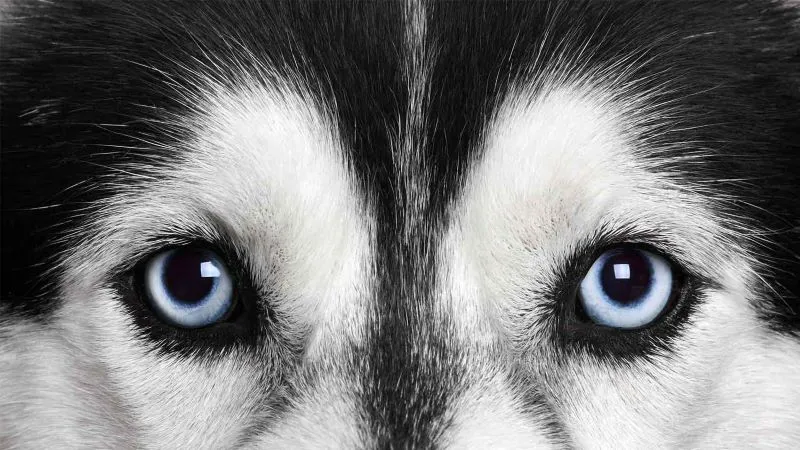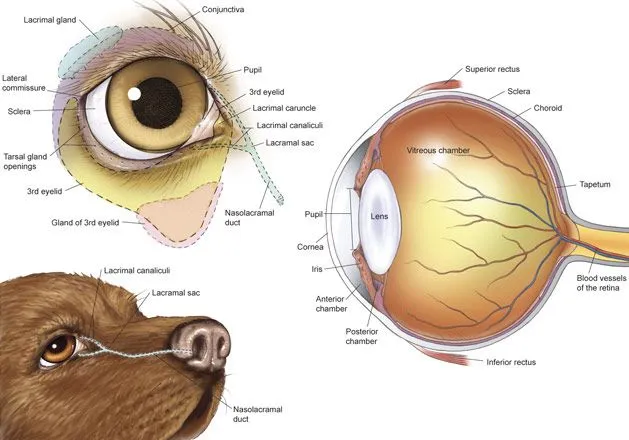127Views

Dog’s Eye: Windows to a Soul and More!
Dogs, our loyal companions, captivate us not only with their playful antics and wagging tails, but also with their expressive eyes.
These soulful gazes seem to hold a universe of emotions, offering glimpses into their canine understanding of the world.
But beyond their cuteness, dog eyes are fascinating biological marvels, adapted for a unique way of seeing and interacting with their environment.
Explore the fascinating world of dog eyes! Learn about their vision, emotions, unique anatomy, and how to care for them.
Vision & Color Spectrum
Unlike humans with trichromatic vision, dogs possess dichromatic vision, meaning they see primarily in shades of blue and yellow.
However, their superior motion detection and night vision compensate for this limited color perception, making them excellent hunters and navigators in low light.
Dog’s eye Anatomy

Dog eyes share many similarities with human eyes, including the cornea, iris, pupil, and lens. However, they possess a third eyelid, also known as the nictitating membrane, which adds an extra layer of protection and aids in tear distribution.
Reading Dog Emotions
While not as complex as human expressions, dog eyes can reveal a range of emotions. A bright, relaxed gaze indicates contentment, while squinting or narrowed eyes can signal fear or aggression.
Dilated pupils show excitement or focus, while droopy eyelids suggest tiredness or submission.
Caring for Your Dog’s Eyes
Regular eye checks are crucial for maintaining your dog’s vision health. Look for signs of discharge, redness, squinting, or cloudiness and consult your veterinarian if you notice anything unusual.
Regular cleaning with a vet-approved solution can also prevent infections and irritation.
Breeds & Eye Variations
Different dog breeds have distinct eye shapes, sizes, and colors. Pugs and Bulldogs, for example, have prominent, bulging eyes, while Basset Hounds sport droopy, melancholic-looking eyes.
These variations can be attributed to breed-specific characteristics and may require extra care due to their exposed nature.
Fun Facts about Dog Eyes
Dogs can see ultraviolet light, which might explain why they sometimes fixate on seemingly empty spaces.
Dogs can blink their third eyelid independently from their regular eyelids, acting as a windshield wiper for their eyes.
Studies suggest that dogs might be able to recognize human emotions by looking at our eyes.
Remember: When you look into your dog’s eyes, you’re not just seeing organs, you’re witnessing a window into their unique perspective and emotional state.
By understanding their vision and caring for their eye health, you can deepen your bond with your furry friend and ensure they see the world clearly and comfortably.


